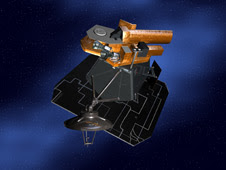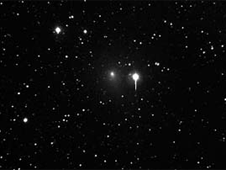
President Barack Obama welcomed NASA Administrator Charles Bolden and a NASA team that assisted trapped Chilean miners to the Oval Office on Thursday for a ceremony that recognized Americans involved in the rescue.

After the White House event, Bolden and Deputy Administrator Lori Garver presented NASA’s Exceptional Achievement Medal to five agency employees who supported the rescue effort. The NASA Exceptional Achievement Medal is awarded for a significant, specific accomplishment or substantial improvement in operations, efficiency, service, financial savings, science, or technology that contributes to NASA's mission.
“We’re greatly honored by the president’s recognition of these extraordinary NASA employees who assisted the Chilean miners,” Bolden said. “I’m sure they would be the first to tell you they were just doing their jobs and nothing out of the ordinary, but the men and women of NASA do extraordinary things each and every day.”
The medal recipients are:
- Dr. Michael Duncan, deputy chief medical officer at NASA's Johnson Space Center in Houston and team leader
- Dr. Albert Holland, operational psychologist at Johnson
- Dr. James Polk, medical officer at Johnson
- Clint Cragg, principal engineer for the NASA Engineering and Safety Center at the Langley Research Center in Hampton, Va.
- Albert Condes, deputy associate administrator of the Office of International and Interagency Affairs at NASA Headquarters in Washington
The employees from Johnson and Langley traveled to Chile Aug. 30 - S ept. 5 and visited the mine after discussions between the Chilean government and Condes. The team consulted with a number of organizations in Chile, including the Ministry of Health, Ministry of Mining, the Chilean Navy and the Chilean Space Agency.
ept. 5 and visited the mine after discussions between the Chilean government and Condes. The team consulted with a number of organizations in Chile, including the Ministry of Health, Ministry of Mining, the Chilean Navy and the Chilean Space Agency.
NASA provided technical advice to the Chilean government based on the agency's long experience in protecting humans in the hostile environment of space. NASA's initial support included recommendations on medical care, nutrition and psychological support. The request for later NASA support was broadened to include recommendations on the design of a Chilean vehicle used to extract the miners. Consultations continued between members of the NASA team and Chilean government officials until the miners were rescued.

After the White House event, Bolden and Deputy Administrator Lori Garver presented NASA’s Exceptional Achievement Medal to five agency employees who supported the rescue effort. The NASA Exceptional Achievement Medal is awarded for a significant, specific accomplishment or substantial improvement in operations, efficiency, service, financial savings, science, or technology that contributes to NASA's mission.
“We’re greatly honored by the president’s recognition of these extraordinary NASA employees who assisted the Chilean miners,” Bolden said. “I’m sure they would be the first to tell you they were just doing their jobs and nothing out of the ordinary, but the men and women of NASA do extraordinary things each and every day.”
The medal recipients are:
- Dr. Michael Duncan, deputy chief medical officer at NASA's Johnson Space Center in Houston and team leader
- Dr. Albert Holland, operational psychologist at Johnson
- Dr. James Polk, medical officer at Johnson
- Clint Cragg, principal engineer for the NASA Engineering and Safety Center at the Langley Research Center in Hampton, Va.
- Albert Condes, deputy associate administrator of the Office of International and Interagency Affairs at NASA Headquarters in Washington
The employees from Johnson and Langley traveled to Chile Aug. 30 - S
 ept. 5 and visited the mine after discussions between the Chilean government and Condes. The team consulted with a number of organizations in Chile, including the Ministry of Health, Ministry of Mining, the Chilean Navy and the Chilean Space Agency.
ept. 5 and visited the mine after discussions between the Chilean government and Condes. The team consulted with a number of organizations in Chile, including the Ministry of Health, Ministry of Mining, the Chilean Navy and the Chilean Space Agency.NASA provided technical advice to the Chilean government based on the agency's long experience in protecting humans in the hostile environment of space. NASA's initial support included recommendations on medical care, nutrition and psychological support. The request for later NASA support was broadened to include recommendations on the design of a Chilean vehicle used to extract the miners. Consultations continued between members of the NASA team and Chilean government officials until the miners were rescued.









































